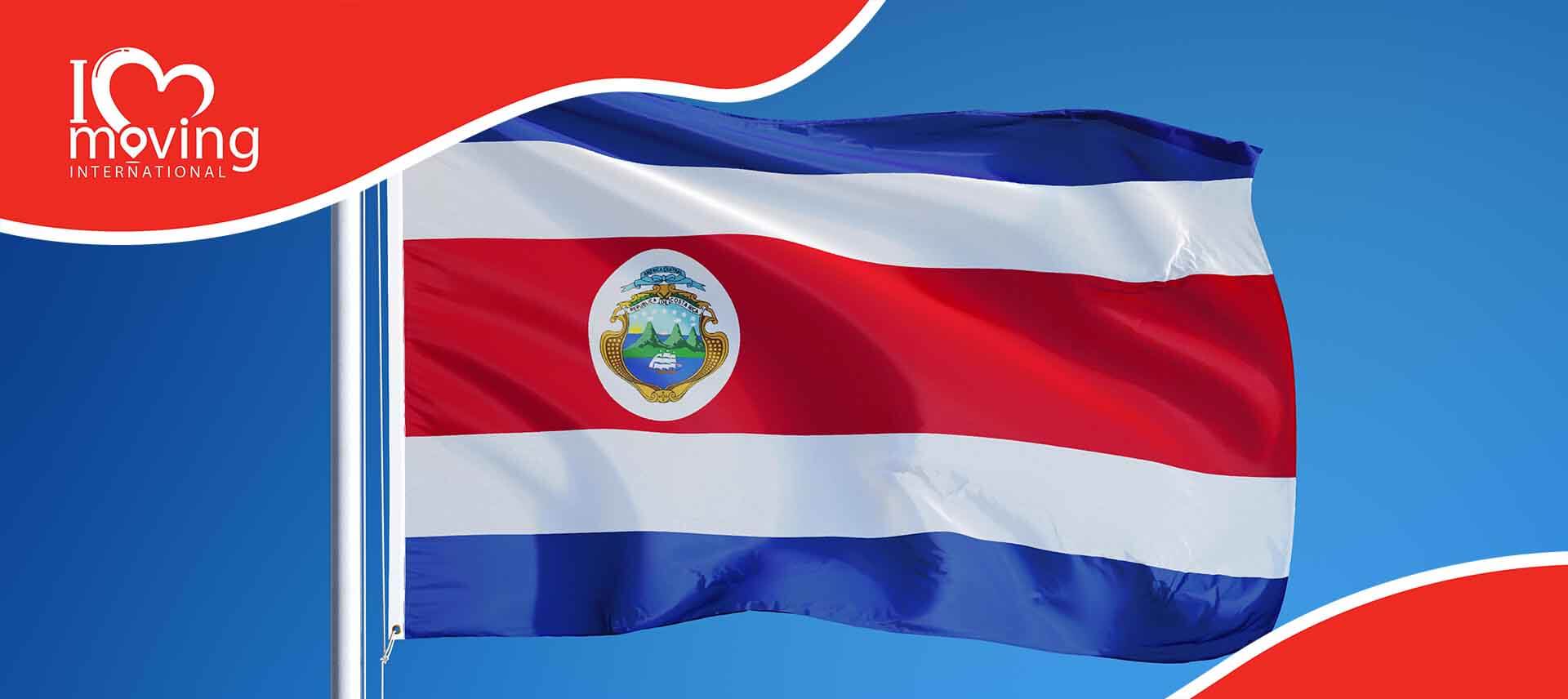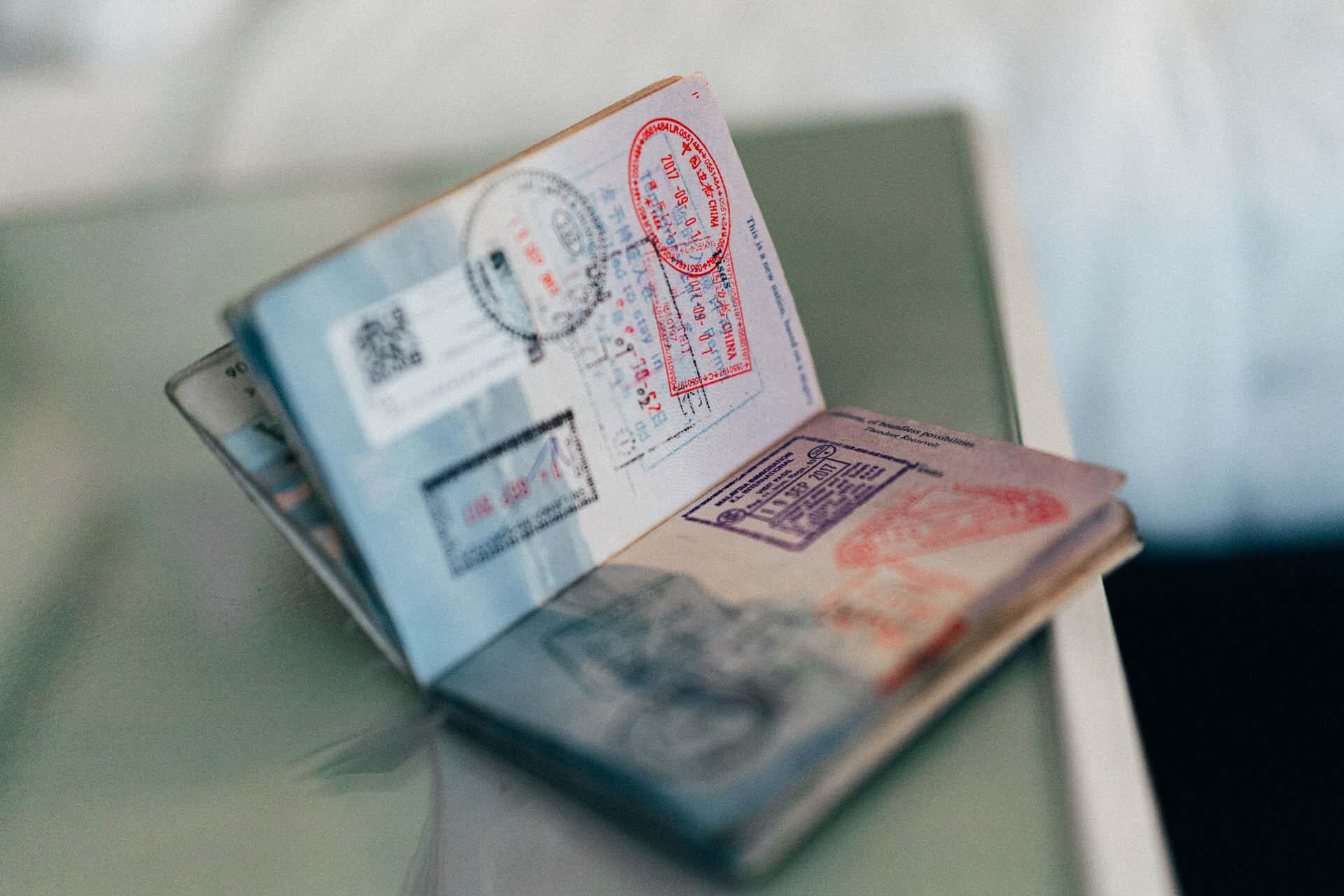In times when you get tired of your job and everyday life, and when everything seems so dull and repetitive, the idea of living somewhere where life seems so much more simple and easy-going has probably crossed your mind several times. Hence, it is no wonder that the idea of moving to Costa Rica is the reason why so many seniors cannot wait to retire and pack their bags.

But it is not just them. Many young people and families are also looking to relocate to this tropical paradise in Central America. So there has to be more than sun and sand behind that, right? Let’s explore the options and see what life in this country has to offer.
A Brief Newcomer’s Guide for Americans Moving to Costa Rica From the US
More than two million tourists every year visit this beautiful country with shores on both the Caribbean Sea and the Pacific Ocean. Almost 5 million people are living here, and 50.000 of them are Americans who decided to live and work in Costa Rica. If you are looking to join them and continue your life as a Tico, then keep reading to find out how you can do that.
How to Move to Costa Rica or 9 Ways to Start the Adventure Called: Living and Working in Costa Rica
The most wanted pieces of information are the ones concerning your legal stay in the country. First of all, there are several ways to obtain a Costa Rican residency permit. But all of them are temporary since only after three years, you can apply for a permanent one. The exception is if you have a first-degree family member who has citizenship. In that case, you are in a much better position. Pretty much everything else depends on income. But let’s take a look at all the options you have for visiting and becoming a full-time Tico.
- Tourist visa: when coming as a tourist, you can stay up to 90 days, and you will get a free three-month visa at customs. We recommend coming here first as a tourist, to explore the state and see if you could actually adapt to life here.
- Perpetual tourism: many use this hack to “live” here for years without having a residency. Before your 90-day tourist visa expires, you just go out for an extended weekend to Nicaragua or Panama and come back. You will get another 90 days. Although many do this, we still recommend living there legally, instead of using perpetual tourism.
- Permanent residency: this is available exclusively to first-degree relatives like parents, siblings, and children (under 25). Until 2010, foreigners were able to obtain citizenship through marriage, but that is no longer possible. Now, after having any type of temporary residence visa for at least three years, foreigners have the right to apply for permanent residency.
- Pensionado temporary residence: this visa is for people who are retired and receive at least $1000 per month. You can bring your spouse or children under 18, and even open a company, but you are not allowed to work in it.
- Rentista temporary residence: this visa requires that you have confirmation from a bank or an investment firm that you will receive at least $2,500 per month for the next five years.
- Inversionista temporary residence: for this type of visa, you have to invest at least $200,000 in a business or real estate, and you will also get a working permit but only for that one business of yours.
- Work visas: it’s really hard to obtain a work visa as a foreigner, but not impossible. You can start a business while on your tourist visa and provide working places for locals, or get a sponsorship from a local company, in case they can prove that there are no locals who are qualified for that job.
- Student visa: to get a student permit, you will first have to apply and be accepted for an educational program. You cannot apply unless you have a certificate issued by the institution in which you want to study.
- Volunteer permit: another great way to travel across the state and live like a local is to apply for a volunteer program, and then ask for a volunteer permit. You can search for all the information and available programs at RCDP International Volunteer and embark on a life-changing journey.

Finding a Place to Live in Costa Rica’s Green Paradise
This Central American nation has something for everyone. Whether you want to live in a rainforest, next to the beach, up in the mountains, or in the city. But keep in mind that infrastructure, prices, and climate vary depending on the landscape, so make sure you have all the information before you rent a place.
Costa Rica is a small country, but it has as much as 99 micro-climates. Even though everyone comes here for the warm climate and sunny beaches, we recommend you explore the country first, before deciding where to settle down. We will now introduce you to the five main regions, but wherever you go, we recommend that you find a local expat community that will help you adapt to the new surroundings.
Costa Rica Relocation Requires You to Explore Costa Rica’s Gold Coast
The Pacific coast stretches along the northern part of Guanacaste province, and it is also known as the Gold Coast. This is your typical picture-perfect heaven with hot weather, prime sandy beaches, and palm trees. There are several places suitable for expats, but the majority of them settle down in a town called Tamarindo, which has around 6,000 residents. An airport is just an hour away, making it very convenient for Americans and other tourists to come here. Life in Tamarindo is very vibrant due to tourists and expats, but it also offers that slow-paced lifestyle of a small beach town. The bottom line, you get the best of both worlds.
Immigrating to Costa Rica and to the Central Valley
Also known as GAM, which stands for the Greater Metropolitan Area of the capital town of San Jose. The area in and around San Jose offers the best infrastructure, and you can choose whether you want to live in San Jose, or outside of the capital, closer to the fields of coffee.
Here you will be settled between the two coasts, so regardless of the beach you are heading to, you will have to drive for an hour or two. Central Valley is not expensive, it’s still friendly towards expats, and the climate is more spring-like.
The Central Pacific
Another popular region for foreigners and tourists is the Central Pacific area, where the majority of locals from San Jose come to spend a weekend at the beach. You can choose among towns like Dominical, Uvita, Jaco, or Ojochal. They are all highly praised for their beaches and restaurants; some of them even have shopping malls and thriving expat communities.
Arenal
If you are looking for something different, and a home on the beach is not your priority, then how about a home with a lake view? Lake Arenal and its volcanic surroundings are welcoming locals and expats who are looking for affordable housing, beautiful nature, serenity, and an ideal spring-like climate. Arenal is around three hours’ drive away from the capital and offers a slow-paced lifestyle for anyone looking to settle down in quiet surroundings.
The Carribean
This side of the country’s coastline has a rainy, jungle-like climate. The most famous place is Puerto Viejo, a mecca for expats who have been coming here for years for a vacation, to find a job, travel, and live. Puerto Viejo is less than an hour from the southern state border with Panama, which is why it is so praised among perpetual tourists. Here you can also find breathtaking beaches, and enjoy a dash of Carribean culture different from anything you will see on the Pacific coast.

Is Getting a Job as a Foreigner a Challenge? Know the Obstacles Before Hiring an Overseas Moving Company
Yes and no. The unemployment rate is below 10%, which is great news, but it can be challenging for foreigners to start a business or find a job because the Costa Rican government is protective of the local workforce. They have a high percentage of educated people, so an expat can expect to get a job only if there are no locals who qualify to do it. Make sure you get all the information about the situation in your profession before you put on pink glasses and start daydreaming.
However, there are some multinational companies, and there is always a chance. So make sure to research the job market, and do not forget about important relocation questions to ask your employer. They will provide you with information about your work permit and the documents needed to travel abroad. If you do not have a job waiting for you, the process can last, and it will all depend on your luck and skill.

Know the Cost of Housing Before Moving Abroad With an Overseas Shipping Company
Life here is not as expensive as in North America or Europe, but it can still get pricey, depending on what you are looking for. For example, when we compare it to other countries in Latin America, it is more expensive. Generally speaking, you could live just fine with $1500 per month and even less. That is if you are not based in touristy places, and you are eating local food instead of eating out in restaurants every day.
On average, one person needs around $747 per month, excluding rent. According to Numbeo, a one-bedroom apartment in the city center can cost around $532 per month, while in the suburbs, it can cost almost $100 less. For those who are looking to purchase a property, the price per square meter in the city center is $1739, while outside of the center is around $1458.

Making the Decision and Moving Internationally
It is never easy to leave your home and move across the world. But luckily for Americans, this piece of heaven is not that far, and living “Pura Vida” while having the opportunity to travel around such a beautiful and diverse land is the dream of many. If you are worried about how to keep in touch with friends after moving abroad, do not. If you move here, expect that your friends will gladly come to visit you more than once.
You can ship your belongings internationally by sea, and also consider overseas vehicle shipping. Purchasing imported cars comes with some extra duty fees, so shipping your old vehicle could save you some money. Use professional packing services if you need help with boxes and packing supplies, or if you want to use storage while you are away.

Do Not Forget to Bring a Dictionary When Moving Overseas
One of the things you should know before relocating abroad is that although English is spoken worldwide, there are still some places where you will have to put effort into learning a new language abroad. The official language is Spanish, but locals speak their version called Costa Rican Spanish. Creole-English is spoken along the Caribbean coast, and besides that, there are five local indigenous languages, which are still in use in some areas.
In coastal towns and Central Valley, you will easily communicate in English, especially with younger people. Still, there are some areas where you should expect to have some problems with communication if you do not know basic Spanish. So the best would be to start learning Spanish on time, and if you need a dictionary – find it, it will help you with breaking down the language barrier after you move abroad.

Ready to Join the Ticos? Get Ready With an International Moving Company
Tico and Tica are typical nicknames for local people, and as a nation, they like to call themselves Ticos because they tend to add tico as a diminutive at the end of many words. It sounds annoying at first, but it’s actually sweet, and you will get used to it eventually. We hope we covered all the burning questions when it comes to living and working in this amazing land. It’s now up to you to determine how you will spend your best years in this tropical paradise.
FAQ
The requirements for obtaining a visa to move to Costa Rica may vary depending on the purpose of your visit and your nationality. Generally, you will need a valid passport, proof of financial solvency, a clean criminal record, and any necessary visas or permits depending on your length of stay and reason for visiting. It is recommended to consult with the Costa Rican embassy or consulate in your home country for specific requirements and procedures.
The cost of living in Costa Rica can vary depending on your lifestyle and location. Generally, it is lower than in many North American and European countries, but it can still be relatively high compared to other Latin American countries. Housing and transportation costs can be significant expenses, especially in urban areas such as San Jose. Food, healthcare, and entertainment costs can be relatively affordable, depending on where you shop and dine. Overall, it’s possible to live comfortably in Costa Rica on a modest budget, but it’s important to research and plan accordingly to ensure your expenses align with your income and lifestyle preferences.
The job market in Costa Rica can be competitive, and it may be challenging for non-Costa Ricans to find employment. However, there are opportunities available in a variety of industries, including tourism, education, healthcare, technology, and manufacturing. English teaching is a popular job for expats, especially in tourist areas. Additionally, jobs in the tech industry are growing, with several multinational tech companies having operations in Costa Rica. Spanish fluency is typically required for most jobs, but there are also opportunities for bilingual speakers. It is important to note that salaries in Costa Rica are generally lower than in more developed countries, and it may take time to find a job that meets your financial needs.
The housing market in Costa Rica can vary significantly depending on the location and type of property. In urban areas like San Jose, housing can be expensive, with prices for apartments and houses comparable to those in major North American and European cities. In more rural areas, the cost of housing can be relatively lower. Additionally, the demand for housing from foreigners looking to retire or purchase vacation homes can impact prices in popular tourist areas. Renting is also an option, but prices can still be relatively high, especially in popular destinations. It’s important to research the market thoroughly and work with a trusted real estate agent to find a property that meets your needs and budget.
The healthcare system in Costa Rica is generally considered to be one of the best in Latin America, and it is ranked higher than many developed countries in some international rankings. The country has a universal healthcare system known as the Caja Costarricense de Seguro Social (CCSS), which provides healthcare services to all legal residents, including foreigners with residency status. The system is funded through a combination of taxes and employer and employee contributions. The CCSS provides comprehensive healthcare services, including primary care, specialist care, hospital services, and prescription medications. The system is also relatively affordable, with most services provided free of charge or at a low cost.
The education system in Costa Rica is generally well-regarded, and the country has a high literacy rate of over 97%. Education is mandatory for children between the ages of 6 and 15 and is provided free of charge by the government. The system consists of primary education, which lasts six years, followed by a three-year secondary education program. Students can then choose to continue their studies in a specialized technical or vocational school, or pursue higher education at a university. Costa Rica has several reputable public and private universities, and education is highly valued in the country. However, the quality of education can vary depending on the school, and some rural areas may have limited access to educational resources.
The public transportation system in Costa Rica is relatively extensive, and it includes buses, taxis, and trains in some areas. Buses are the most common mode of transportation and serve most areas of the country. They are generally affordable, with frequent service to many destinations. Taxis are also widely available and are generally more expensive than buses. In recent years, the government has made significant investments in improving public transportation infrastructure, including the construction of new bus terminals and the expansion of bus routes. However, the system can be crowded and may not always run on schedule. Additionally, some rural areas may have limited access to public transportation, and many expats choose to purchase or rent a car for added flexibility.
The climate in Costa Rica is tropical and generally pleasant year-round. There are two main seasons: the dry season and the rainy season. The dry season runs from December to April and is characterized by sunny weather with low humidity. The rainy season runs from May to November and is characterized by frequent afternoon showers and high humidity. Temperatures in Costa Rica can vary depending on the location and altitude.
The culture of Costa Rica is diverse and influenced by indigenous, European, and Afro-Caribbean traditions. The country is known for its “Pura Vida” lifestyle, which emphasizes simplicity, relaxation, and appreciation for nature. Family is highly valued in Costa Rican culture, and social interactions are often warm and friendly. The country has a rich cultural heritage, and festivals and celebrations are an important part of life, including the annual Independence Day parade and the Dia de los Muertos (Day of the Dead) celebration. Costa Rican cuisine is also a significant aspect of the culture, with dishes such as gallo pinto (rice and beans), ceviche (marinated seafood), and empanadas (stuffed pastries) being popular.
Costa Rica is known for its beautiful natural landscapes and abundant recreational activities. The availability and cost of recreational activities can vary depending on the location and type of activity. Some popular activities include hiking, surfing, snorkeling, and wildlife viewing. Many of these activities can be enjoyed in national parks and protected areas, which may require a fee to enter.
The cost of guided tours and activities can also vary, with some being relatively affordable and others more expensive. For example, a guided hike through a national park may cost around $50-100 per person, while a zip-lining tour may cost upwards of $100 per person. However, there are also many free or low-cost activities available, such as exploring local markets, attending cultural events, or enjoying the beach
Costa Rica has many beautiful and livable cities, each with its own unique character and charm. One of the best cities to live in in Costa Rica is San Jose, the country’s capital and largest city, which offers a bustling urban atmosphere, cultural attractions, and a variety of restaurants and shops. Other popular cities include Escazu, a trendy and affluent suburb of San Jose with excellent schools and a high standard of living, Heredia, a university town with a rich history and vibrant arts scene, and Grecia, a small town with a mild climate, picturesque central park, and easy access to San Jose. Other up-and-coming cities in Costa Rica include Jaco, a beach town with a growing expat community, and Tamarindo, a surfing hub with a lively nightlife scene.
Finding a job in Costa Rica as a foreign national can be challenging, but it is possible in certain fields. The job market in Costa Rica is competitive, and many positions require fluency in Spanish. However, there are some opportunities for foreign nationals, particularly in the fields of technology, tourism, and education. Additionally, teaching English is a common job for foreigners, and there are often opportunities available through language schools or private tutoring. It’s important to note that working in Costa Rica as a foreign national typically requires a work permit, which can be obtained through the Costa Rican embassy in the applicant’s home country.
Yes, it is possible to bring a pet with you to Costa Rica, but there are specific requirements that must be met in order to do so. Pets entering Costa Rica must have a current rabies vaccination and a health certificate issued by a licensed veterinarian within 15 days of travel. The health certificate must include a description of the pet, its age, sex, and breed, as well as confirmation that it is free from any infectious diseases.
In addition, dogs must be treated for tapeworms within 15 days prior to travel. Upon arrival in Costa Rica, pets may be subject to a physical examination by a government veterinarian. It’s important to note that certain dog breeds, such as pit bulls and rottweilers, are not allowed to enter the country. Additionally, airlines may have their own requirements for transporting pets, so it’s important to check with the airline ahead of time.
The specific documents required to move to Costa Rica can vary depending on your individual circumstances, such as your nationality, reason for travel, and intended length of stay. However, some common documents that may be required include:
- A valid passport: Your passport should be valid for at least six months beyond your planned length of stay in Costa Rica.
- A visa: Depending on your nationality and reason for travel, you may need a visa to enter and/or stay in Costa Rica. There are different types of visas available, including tourist visas, student visas, and work visas.
- Proof of financial means: You may be required to show proof of sufficient funds to support yourself during your stay in Costa Rica, such as bank statements or a letter from a financial institution.
- Health insurance: Costa Rica requires visitors and residents to have health insurance that meets certain minimum requirements.
- Birth and marriage certificates: Depending on your circumstances, you may need to provide birth and/or marriage certificates to apply for certain visas or residency permits.
It’s important to research the specific requirements for your individual situation and consult with the Costa Rican embassy or consulate in your home country for guidance.
To open a bank account in Costa Rica, you will first need to choose a bank and gather the necessary documents, such as your passport and proof of residency. Next, you can visit a branch in person or apply online, depending on the bank’s policies. Once you submit your application and required documentation, the bank will review your information and may schedule an appointment to finalize the account opening process. Some banks may also require a minimum deposit to open an account. It’s important to review the fees and requirements of each bank before making a decision.
The tax system in Costa Rica is based on a territorial principle, meaning that residents and corporations are taxed on their worldwide income, while non-residents are only taxed on their Costa Rican-sourced income. The tax system includes both direct and indirect taxes, with the most significant sources of revenue being income tax, value-added tax (VAT), and sales tax. There are also specific taxes on luxury goods, real estate, and vehicles. The tax rates vary depending on the type of tax and the taxpayer’s income or assets. The tax year in Costa Rica is the calendar year, and tax returns are due in March of the following year.
In general, Costa Rica is known for having a good work-life balance, with a strong emphasis on family and personal time. The country has a relatively low average workweek of around 48 hours and generous vacation time. The standard vacation time is two weeks per year, but many employers offer additional time off or flexible work arrangements. In addition, Costa Rica has a strong culture of “Pura Vida,” which emphasizes the importance of enjoying life and taking time to relax and enjoy the natural beauty of the country. However, like many countries, the work-life balance can vary depending on the industry and the individual employer.
Yes, it is possible to bring your car with you to Costa Rica, but the process can be complicated and expensive. Costa Rica has strict regulations on importing vehicles, and the requirements can vary depending on the age and type of vehicle. You will need to obtain specific documentation, such as a certificate of origin and a title, and comply with safety and environmental standards. In addition, there are import taxes and other fees that must be paid, which can be quite high. It’s important to do thorough research and consult with experts to determine if bringing your car to Costa Rica is the best option for your situation. Many expats in Costa Rica choose to purchase a car locally to avoid the complexities of importing a vehicle.
The local cuisine in Costa Rica is known for being simple, flavorful, and healthy, with an emphasis on fresh, natural ingredients. Rice and beans are a staple of the Costa Rican diet and are often served alongside meats, vegetables, and fruits. Other popular dishes include Gallo Pinto (a rice and bean dish), Casado (a traditional meal with rice, beans, meat, and vegetables), and ceviche (a dish made with marinated raw fish or seafood).
Costa Rica is also known for its fresh fruit, including mango, pineapple, and papaya, which are often served as a side dish or as part of a refreshing drink. The country has a strong coffee culture, with high-quality coffee being a significant export. There are also a variety of street food vendors and markets throughout the country where you can try traditional Costa Rican dishes and snacks.
Costa Rica is a popular tourist destination known for its lush rainforests, stunning beaches, and diverse wildlife. Some of the most popular destinations in the country include Arenal Volcano, a stunning volcano and hot springs area in the northern part of the country, and Manuel Antonio National Park, a biodiverse park that’s home to several species of monkeys, sloths, and tropical birds. Other popular destinations include Monteverde Cloud Forest Reserve, known for its beautiful cloud forest and zipline tours, and Tortuguero National Park, which is home to sea turtles and other wildlife. The capital city of San Jose is also a popular destination for its museums, art galleries, and vibrant nightlife.








